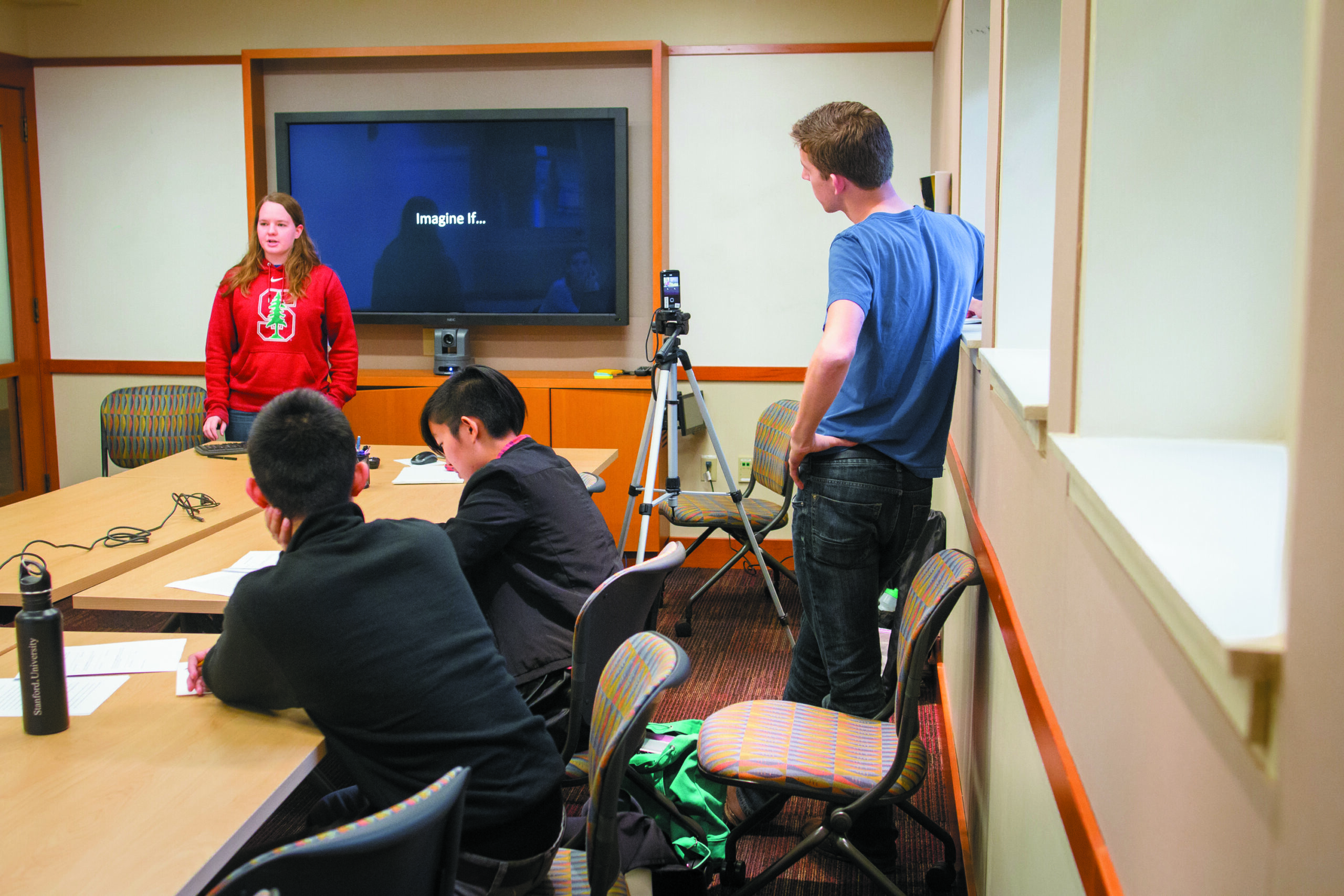Stanford’s Oral Communication program marks 25 years
The program, which has become a valuable resource for Stanford students and faculty across fields, celebrated the milestone at an event on May 12.

Oral Communications tutoring sessions help Stanford students grow their speaking skills. (Image credit: L.A. Cicero)
The Oral Communication Program is celebrating 25 years at Stanford. The program, which is part of the Program in Writing and Rhetoric, marked the anniversary with a celebration on May 12.
“This anniversary reflects the enduring relevance of the spoken arts at Stanford,” said Program Director Doree Allen. “It is a testament to the central role effective communication plays in teaching and learning and to the university’s commitment to fostering oral communication instruction across the disciplines.”
In the mid-1990s, a university commission on undergraduate education recommended oral communication instruction for Stanford students to complement the Technical Communication Program in the School of Engineering. The Oral Communication Program officially launched in the fall of 1996 as part of the Center for Teaching and Learning (CTL). Allen was hired to develop the program, which offered courses and workshops to undergraduate and graduate students, as well as consulting services for faculty interested in implementing such instruction in their curricula.
Demand for these services was high, so the following year Allen hired and trained peer tutors—Stanford students who could provide instruction and guidance to other students. And in 2000 she hired Thomas Freeland, who had recently completed his Ph.D. in Stanford’s Drama Department, to serve as a lecturer.
Dissatisfied with the more conventional and formulaic ways of teaching public speaking, Allen and Freeland took a new approach. They implemented performance techniques and looked to the psychology, sociology and neurolinguistics of self-expression for pedagogical guidance.
“We were trying to broaden the stereotypical ways that public speaking was viewed,” Allen said.
She noted that at the time, many of Stanford’s peer institutions did not have public speaking programs perhaps because of the assumption that students admitted to those schools would arrive on campus with those skills.
“Our program was a departure from what private institutions were doing with regard to teaching oral communication,” she said. “But I think people have since recognized that this is an important skill for everyone at every kind of institution.”
For years, the program’s speaking center was housed in the former Meyer Library (which was demolished in 2015, affording green space for Stanford’s 2.5-acre Meyer Green). In 2012, the Study of Undergraduate Education at Stanford (SUES) recommended that the Oral Communication Program’s speaking center merge with the Hume Writing Center. Today, they make up the Hume Center for Writing and Speaking in building 250, just off the main quad, and the program itself has moved from CTL to the Program in Writing and Rhetoric.
“We were really seeking to tap into the synergies between writing and speaking,” Allen said. “When we brought the centers together, we were excited about leveraging that potential and creating a hub for the communication arts.”
The program now also has a third lecturer, Helen Lie. While its focus continues to be on serving Stanford undergraduate and graduate students and assisting faculty, the program is also available to Stanford staff and postdoctoral scholars.
Nadav Ziv, ’22, is an undergraduate studying international relations and a peer tutor in the Oral Communication Program. He said that everyone has the capacity to be good public speakers, but some people just need help developing that skill.
“Most students have an intuitive sense of what constitutes powerful communication,” he said. “I’m deeply grateful every time I can help them tap into that intuition and create a message authentic to their voice and values.”
Through the program, Ziv created a project called Personal Politics that recently brought Stanford students together to share personal stories about politically charged issues while helping them practice public speaking. The event was taped live for a podcast.
“One student with undocumented parents spoke about her fear that they would be deported. Another student from Kenya gave a fiery speech about gender discrimination back home,” Ziv said. “All of the participants shared moving stories and their vision for a better world.”
The Oral Communication Program marked its anniversary at a joint celebration with the Hume Center, which is also marking its 20th anniversary at Stanford. The event brought together staff, tutors, students and faculty who have utilized the program’s services over the years.
Allen said she’s eager to see how the program will continue to grow and help students become better communicators.
“Among other things, learning to become more articulate involves learning to listen more intently, to analyze more cogently, and to trust one’s own voice more deeply,” she said.